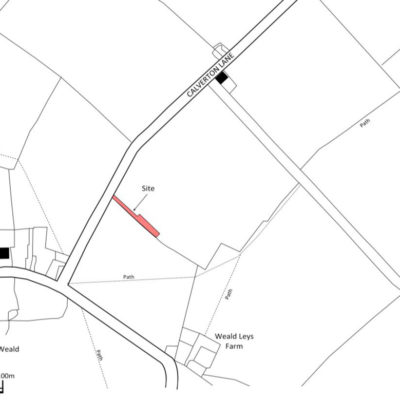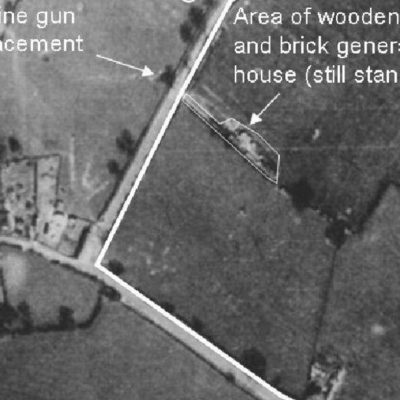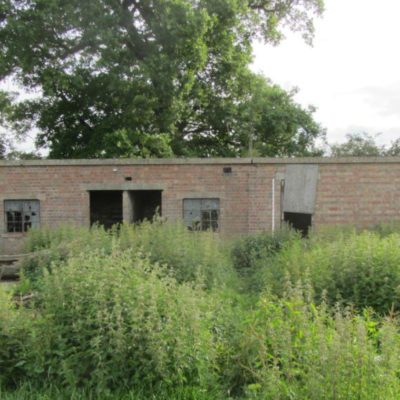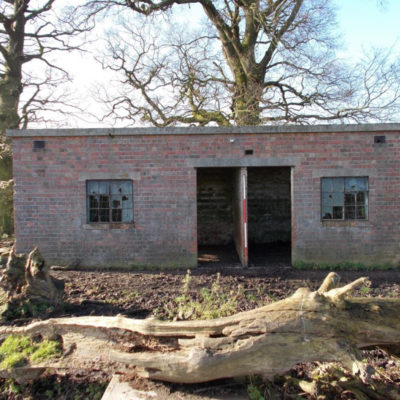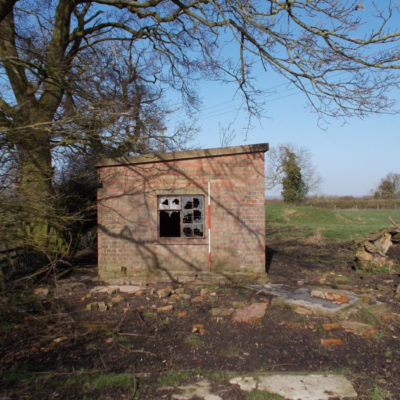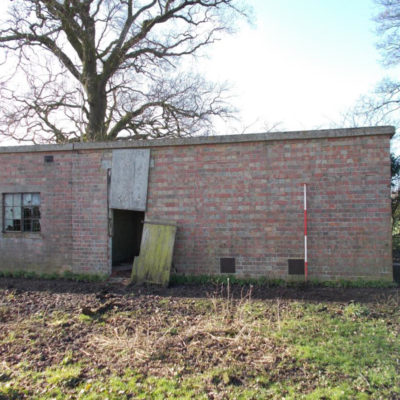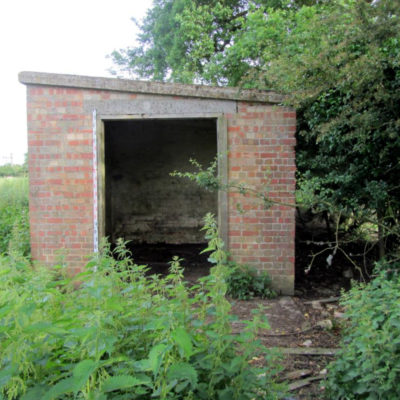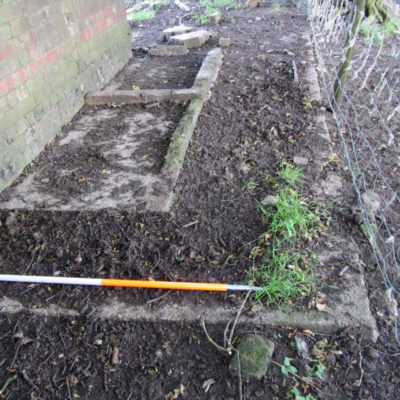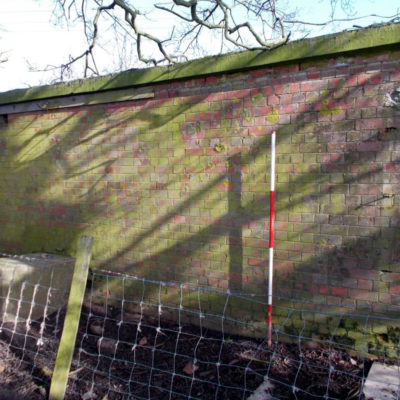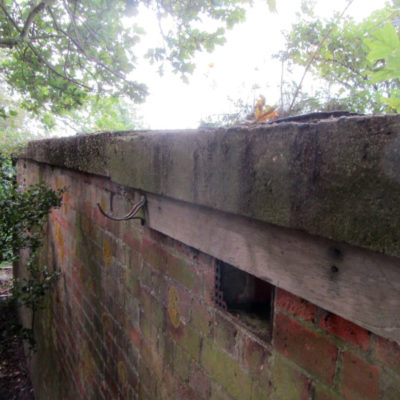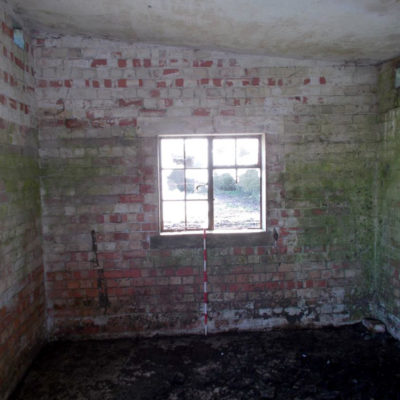Standing Building Recording, Second World War Radio Station
Border Archaeology (BA) was instructed to carry out a programme of Standing Building Recording to RCHME Level 2 on a complex of buildings currently used as livestock shelters, originally forming part of a former Second World War radio station located near Milton Keynes.

In Brief
Standing Building Recording
Location: Milton KeynesKey Points
- The Upper Weald station appears to have functioned as a control centre transmitting and receiving communications from SOE and MI6/SIS agents overseas, mainly in France, Belgium, Holland and Denmark.
- The radio station was established in 1940 and further expanded in 1944. The station was eventually dismantled at some point between April and October 1946.
- Consultation of documentary records and aerial photography relating to the study area established that the complex of buildings formed part of the Upper Weald Radio Station.
Summary
The complex of buildings forming the subject of this programme of building recording formed the Upper Weald Radio Station, one of a series of wireless radio stations established during the Second World War by Section VIII, the communications department of MI6, who handled Ultra military traffic (i.e. German military messages encrypted using the Enigma machine), covert messages from the Foreign Office and overseas embassies and communications from MI6 and other Allied agents abroad.
Shortly after the acquisition of Whaddon Hall as the HQ of Section VIII in November 1939, a series of outlying wireless stations were established in the following year, two being located at Whaddon (Windy Ridge and Main Line) and another two stations situated at Nash andUpper Weald. TheUppe rWeald station appears primarily to have functioned as a control centre transmitting and receiving communications from SOE and MI6/SIS agents overseas, mainly in France, Belgium, Holland and Denmark (Pidgeon, 2008, 82-83). During 1943, the Upper Weald station also communicated with ‘Slocum’s Navy’, a fleet of clandestine vessels sailing from Cornwall or the Scilly Isles to rendezvous with French intelligence agents in Brittany. It appears that the radio station was originally powered by batteries charged by a generator, which was subsequently replaced by mains electricity in 1944, when it appears that the station was expanded and new transmitter masts and aerials erected at nearby Calverton (Pidgeon 2008, 294-295).
The radio station at Upper Weald consisted of two prefabricated huts, probably constructed of wood (of which only the foundation plinths survive), which appear to have served as the wireless station and a recreation room/accommodation for the wireless operators and a brick-built single-storey structure (still extant) which appears to have been used as a generator/battery room and offices. Located immediately opposite the brick- built structure is the plinth for a third hut that also appears to have been used as a generator room, to the SE of which are the foundations for another block, probably used for toilets or a washhouse. A metalled driveway ran NW from the radio station to Calverton Lane, with evidence for a possible sentry post at the field entrance. These buildings are all visible on a RAF vertical photograph of the area dated April 9th 1946 (Calverton Records Society). The station at Upper Weald was apparently dismantled shortly after the Second World War, between April and October 1946; the 1946 aerial photograph still shows that the buildings were extant at that time; however, an OS 6-inch map of 1953 only shows the brick structure housing the generator/battery room and offices and the driveway providing access to Calverton Lane.
Results
The programme of building recording to RCHME Level 2 undertaken by Border Archaeology on a complex of buildings within a field on the E side of Calverton Lane has produced the following results, which are summarized below:
- Consultation of documentary records and aerial photography relating to the study area established that the complex of buildings formed part of the Upper Weald Radio Station, one of a series of wireless stations established in the local area during the Second World War by Section VIII, the communications department of MI6, whose headquarters was based nearby at Whaddon Hall.
- The Upper Weald station appears to have functioned as a control centre transmitting and receiving communications from SOE and MI6/SIS agents overseas, mainly in France, Belgium, Holland and Denmark.
- The radio station was established in 1940 and further expanded in 1944. The station was eventually dismantled at some point between April and October 1946.
- The building recording programme surveyed the extant brick built structure with a sloping concrete roof (designated as Buildings A & B), which appears primarily to have been a generator building but could possibly have included an office/storeroom (at its SE end). Two distinct phases of construction were identified, although the similarity in construction suggests they are nearly contemporary with each other. To the rear of the structure was a toilet block (Building C).
- Immediately NE of the brick structure were the concrete foundations for a prefabricated hut (Building D) which probably also housed a second generator (based on the evidence for an extant concrete machine base). To the E of this building was the foundation pad for a free-standing toilet or wash-house block (Building E).
- To the SE of the brick built structure, two further rectangular foundation plinths for prefabricated huts were identified and recorded (Buildings F and H); it is likely that these represent the remains of the wireless station and an accommodation/recreation room for the wireless operators. The upstanding remains of a small brick built shed associated with one of the huts was also surveyed (Building G), it is possible that it may have served as a store room for batteries associated with the wireless station.

